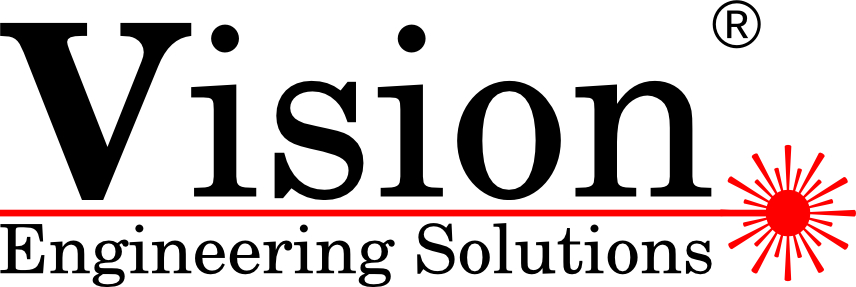Space Domain Awareness
Vision Engineering Solutions presents a comprehensive approach to augment both the optical and radar capabilities of current Space Domain Networks (SDNs). Augmenting the optical capability will allow tracking, identification and characterization of objects that have little to no radar cross-section. Augmenting radar observations with optical observations allows for better identification and characterization of larger space objects. This methodology is different than other approaches as it does not rely on using the largest possible aperture like SST. It relies on an integrated approach that takes into consideration sensor design, data collection, and analysis.
Since our approach relies on smaller (1m class) aperture systems, it is applicable to ground or space based implementations. VES proposes not only conventional imaging sensors, but also unconventional sensors such as polarization, Laser Detection and Ranging (LADAR) and high-speed radiometry. Data fusion of optical and radar data combines the advantages of both types of data: the high angular accuracy of optical data and the high range and Doppler accuracy of radar data. The proposed optical system can determine the position of objects in orbit with an elevation and azimuth tolerance better than 0.0001°, which means that it can determine the angular position of a satellite in LEO to within about a meter.
Modeling and simulation plays an important role as it is used for sensor design, data analysis and orbit determination. Areas that fall under this category are: space object modeling, atmospheric modeling, sensor modeling and SDN modeling. SDN modeling includes satellite drag, visibility, and network simulation for sensor scheduling. Finally, modeling and simulation based approaches are used for identification, discrimination and characterization of space objects.
The proposed solution uses a multi-pronged approach to optical surveillance:
- Multiple low-cost, meter-class, optical trackers
- Unconventional imaging and non-imaging sensors
- Lasers for tracking and characterization of objects
- Data fusion of radar and optical data
- Novel data analysis methods for discrimination and characterization
- Advanced Modeling and Simulation for system design and data analysis
| SERVICES | SUB SERVICES | PROVIDED DATA |
|---|---|---|
| LAUNCH IMAGERY | Video for stack integrity Metrics for impact prediction | High resolution imagery (visible or NIR) 3D geolocation (triangulation or angle-angle-range) Roll-pitch and yaw estimation (in real time) best estimate trajectory (in real time) |
| Video for Customer Public Relations | High resolution, high definition visible color imagery | |
| Radiometric and Metric data for engine (or total system) performance | High resolution, radio-metrically calibrated imagery High speed radiometry Metric position and orientation data | |
| Staging verification | High resolution imagery from down range site | |
| High resolution, radio-metrically calibrated imagery High speed radiometry Metric position and orientation data | ||
| SATELLITE ORBIT DETERMINATION | Initial orbit determination | multiple angle-angle position measurements OR, multiple range only position measurements OR, multiple angle-angle-range position measurements |
| Continuous or period updates | multiple angle-angle position measurements OR, multiple range only position measurements OR, multiple angle-angle-range position measurements | |
| SATELLITE HEALTH MONITORING | Initial orbit determination | for large LEO satellites: high resolution imagery for small LEO satellites: analysis of light curves for MEO or GEO satellites: analysis of light curves |
| Satellite orientation verification Determination of tumble rates | for large LEO satellites: high resolution imagery for small LEO satellites: analysis of light curves for MEO or GEO satellites: analysis of light curves | |
| Monitoring for damage (long term monitoring) | for large LEO satellites: high resolution imagery for small LEO satellites: analysis of light curves for MEO or GEO satellites: analysis of light curves | |
| MANEUVER VERIFICATION | On-orbit RCS engine burns (including quick ephemeris recalculation) | High sensitivity, terminator imagery of plumes multiple angle-angle-range position measurements |
| LEO to GEO transfer orbit monitoring for: | High sensitivity, terminator imagery for position determination for retro-equipped satellites: range or doppler measurements. | |
| CONJUNCTION ANALYSIS AND PREDICTION | Continuous prediction using catalog data | Continuous updates of catalog for objects and debris Conjunction analysis software. |
| refined predictions using on-demand measurements of conjunction objects | multiple, high-resolution, angle-angle-range measurements Conjunction analysis software | |
| SATELLITE LASER COMMUNICATIONS | Ground to LEO lasercomm | user data from satellite to ground station user data from ground station to satelliteGround to GEO lasercomm |
| Ground to GEO lasercomm | user data from satellite to ground station user data from ground station to satelliteGround to GEO lasercomm |
